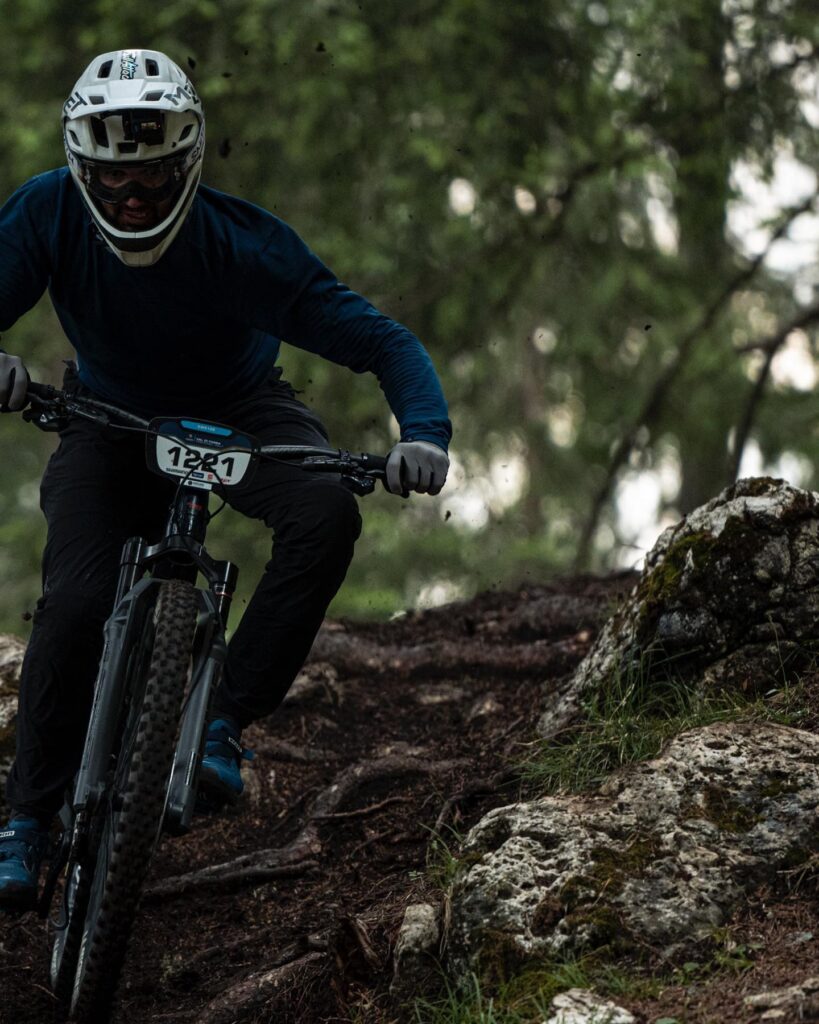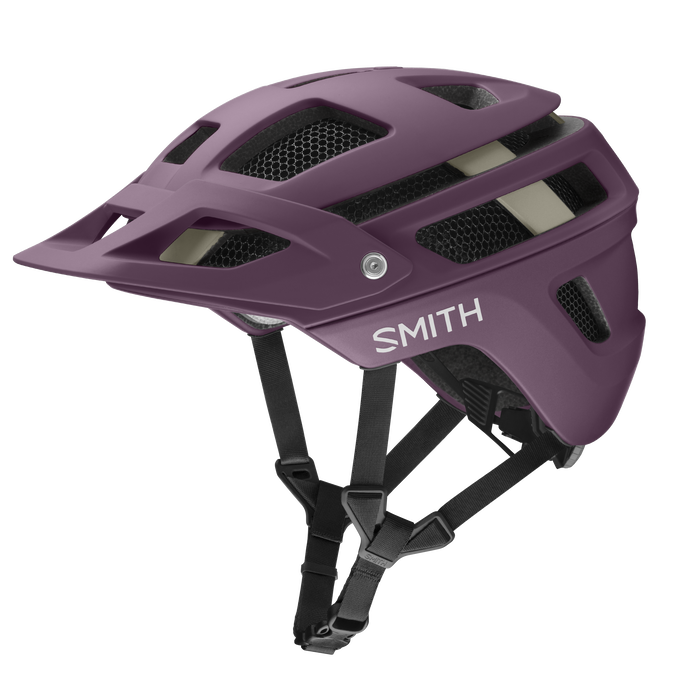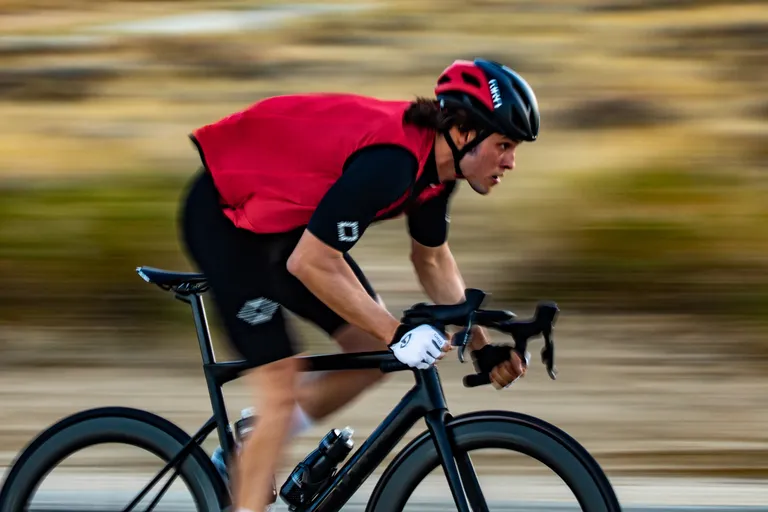Reducing Helmet Noise for MTB Rides

Key Point Summary of Reducing Helmet Noise for MTB:
- Understanding Helmet Noise: Recognize that helmet noise primarily comes from wind turbulence and can be exacerbated by helmet design and fit.
- Strategies for Noise Reduction: Includes selecting helmets with aerodynamic designs, using ear protection or specialized earplugs, and adjusting the helmet fit.
- Benefits of Reducing Noise: A quieter ride enhances focus, reduces fatigue, and increases the enjoyment of your surroundings.
As a seasoned cyclist who has spent years navigating the trails on mountain bikes, tearing down gravel paths, and hopping barriers in cyclocross races, I’ve come to appreciate the small adjustments that can make a big difference in comfort and performance. One aspect that often goes overlooked is the noise that can come from your helmet while riding. Today, I want to share some insights and tips on reducing helmet noise for a more comfortable and serene MTB experience.
Helmet noise is something that, at first, I hardly paid attention to. It wasn’t until a particularly long and windy day on the trails that I realized how much the constant roar was affecting my concentration and overall enjoyment of the ride. It was a distraction, one that I knew I needed to address if I wanted to continue enjoying my time on the bike to the fullest.
Understanding Helmet Noise
The first step in tackling helmet noise is understanding where it comes from. Most noise is generated by wind passing over and through the helmet, creating turbulence around the ears. The design of the helmet, including the vents and the way it fits on your head, can significantly impact the level of noise you experience.

Strategies for Noise Reduction
Helmet Design and Selection: When choosing a helmet, look for one with an aerodynamic design that aims to minimize wind resistance. Some helmets are specifically designed with noise reduction in mind, featuring strategic vent placements that reduce turbulence. During my search for the perfect helmet, I found that models with fewer, but larger vents tend to be quieter than those with a lot of small vents.
Ear Protection: Wearing ear protection, such as cycling-specific earplugs, can significantly reduce the noise level. These earplugs are designed to cut down on wind noise while still allowing you to hear important sounds, like traffic or conversation. I was skeptical at first, but after trying a pair, I was amazed at the difference they made. Not only did they reduce the wind noise, but they also made it easier for me to stay alert to my surroundings.
Helmet Fit: A properly fitting helmet is less likely to create unnecessary noise. Make sure your helmet is snug but not too tight, and that it sits level on your head. Adjust the straps and padding to eliminate any gaps that can allow wind to whistle through. I recall a ride where adjusting the fit of my helmet mid-ride made a noticeable difference in the noise level, highlighting how important a good fit is.
Additional Accessories: For colder days, a skull cap or a thin beanie worn under the helmet can reduce noise while keeping your ears warm. Similarly, a neck gaiter or a balaclava can provide noise reduction by streamlining the flow of air around your neck and chin.
Benefits of Reducing Noise
The impact of reducing helmet noise on my rides was profound. The most immediate benefit was an increase in focus. With less wind noise battering my ears, I found it easier to concentrate on my riding technique and enjoy the natural sounds around me. This, in turn, reduced my fatigue, as I wasn’t constantly battling a barrage of noise. Perhaps most importantly, the reduction in noise made my rides more peaceful and enjoyable. There’s something truly special about being able to hear the sounds of nature as you navigate through the trails, from the rustling of leaves to the distant calls of wildlife.

In The End
Reducing helmet noise is about more than just comfort; it’s about enhancing the overall mountain biking experience. By choosing the right helmet, utilizing ear protection, ensuring a proper fit, and considering additional accessories, you can significantly decrease the amount of noise you encounter on your rides.
The result is a more focused, less fatiguing, and ultimately more enjoyable time on the trails. As someone who has experienced the difference firsthand, I can attest to the positive impact that tackling helmet noise can have. So, the next time you gear up for a ride, remember that a quieter helmet could be the key to a more peaceful adventure on the trails.
For cyclists seeking a peaceful ride without compromising on safety, the latest generation of MTB helmets combines advanced aerodynamic design with strategic vent placement to significantly reduce wind noise. These helmets not only offer top-tier protection but also feature enhancements like integrated ear covers or specially designed channels that streamline airflow, minimizing the distracting and often fatiguing sounds of wind turbulence.
Top 4 MTB Helmets with Noise Reduction Features:
- MET Roam MIPS: The MET Roam MIPS is adept at handling aggressive trail rides with its MIPS technology enhancing brain protection. Its design prioritizes reducing wind noise through aerodynamic shapes and well-placed ventilation, ensuring comfort and quiet.
- Lazer Jackal MIPS: As Lazer’s premium MTB helmet, the Jackal MIPS excels in aerodynamics and noise reduction. It features an innovative ATS fit system for a secure fit, an adjustable visor, and MIPS technology, all contributing to a quieter, more protected ride.
- MET Parachute MCR: Known for being one of the lightest full-face helmets on the market, the MET Parachute MCR includes a magnetic chin bar release system (MCR) for versatility. Its design minimizes wind noise while providing maximum protection, making it ideal for enduro riders seeking silence and safety.
- Giro Chronicle MIPS: The Giro Chronicle MIPS offers comprehensive coverage and MIPS safety technology, with a focus on minimizing helmet noise. Its aerodynamic design and strategic venting not only reduce noise but also provide a comfortable, secure fit for long rides.
Each of these helmets has been carefully designed to reduce noise while ensuring rider safety, offering a more peaceful and focused mountain biking experience.


FAQ
How can I make my helmet quieter?
- Opt for a helmet with an aerodynamic design to minimize wind resistance.
- Use earplugs or cycling-specific ear protection to cut down on wind noise.
- Ensure the helmet fits snugly; a proper fit can reduce noise by preventing wind from entering.
How can I make my helmet soundproof?
Completely soundproofing a helmet is challenging due to the need for ventilation and the ability to hear important environmental sounds. However, wearing earplugs or using helmets with integrated ear padding can significantly reduce noise levels.
How do you reduce wind noise when cycling?
- Wear a slim-fitting cap or a skullcap under your helmet to streamline the shape and reduce wind turbulence.
- Consider using specially designed earplugs that reduce wind noise while allowing you to hear traffic and other important sounds.
- Adjust the position of your helmet and tighten the straps to minimize gaps that can lead to wind noise.
Are more expensive helmets quieter?
Not necessarily. While more expensive helmets often offer advanced aerodynamic designs and materials that can lead to a quieter ride, the price alone does not guarantee a quieter helmet. The fit, design, and personal setup (like the use of earplugs) play crucial roles in noise reduction.






